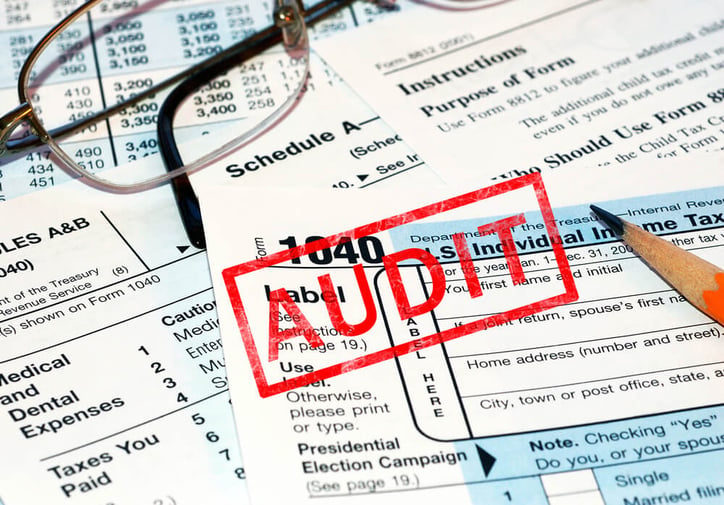
Nobody looks forward to receiving a notice from the IRS, especially one that says audit. However, of the three types of audits the agency performs, there is one you can almost be happy about — a correspondence audit.
At the very least, you may feel relief since it isn't face-to-face. What is a correspondence audit, and how do you handle it? Here is all you need to know.
A Little Reassurance
As it happens, over 75% of all audits are correspondence audits. It is the least invasive and simplest type to deal with. On top of that, the chances of any type of audit at all are pretty tiny. In 2016, the IRS audited just 0.6% of individual returns from that year. Even rich people have little to fear. Only 3% of Americans who earned more than $1 million in 2018 were selected for audit.
Audit selection is pretty random. Most returns are tagged by a computer algorithm, most commonly for unallowable items. Thus, the computer software used is called the Unallowable Items Program. Makes sense, right?
Otherwise, audits occur because an informer tipped off the tax authorities, alleging wrongdoing or tax evasion. The IRS has another program called the Discriminant Index Function (DIF) that screens tax returns and tags each with a score indicating the probability of error. The program has been around since 1969 and checks various lines on the tax document for problems.
The IRS has up to three years to audit a specific return, so you should keep all documentation at least that long. Better yet, keep it for ten years, just in case.
Defining a Correspondence Audit
The word correspondence isn't used much these days, but it generally means sending something in the mail. And that is precisely what a correspondence audit does — it takes place through the U.S. postal service, good old snail mail.
You can take care of the whole thing that way, or you may need a phone call or two. Still, you won't need to go to your local IRS office, and the agency won't visit your home or business. That's a win, right?
The scope of a correspondence audit is relatively narrow. If problems arise, it could expand into a field audit, where you need to meet with your local IRS representative. Unless you know you have issues, don’t worry too much about an escalation. The correspondence audit is mostly used for simple mistakes on a tax return that can be corrected easily through the mail.
What the IRS Sends
The first thing you may receive is a 566 Letter. The IRS uses this to request more information to process your return, like data on your income, expenses, or itemized deductions. The letter has a list of missing documents the agency needs to verify your return is correct.
Send them what they ask for, and you should be OK.
If you don’t respond or the IRS requires even more material, you may receive a CP2000 letter or notice. More generally, if you receive this letter, it indicates the information on your tax returns doesn’t match IRS records. Remember, most employers of any kind are required to send a copy of your income statement to the IRS. With the CP2000, the IRS is proposing a change to your return.
What to Expect
First, don’t panic. Like any audit, a correspondence audit could end in your favor if you overpaid. Besides, with such a low-level audit, there’s probably not much wrong.
People typically get a correspondence audit because they have unallowable items, which is IRS-speak for trying to take stuff off your taxes that you aren’t supposed to. Some examples are:
- Deduction for married couple when you both work
- Disability income exclusion
- Automobile expenses
- Medical expenses
- Utility taxes
- Adoption expenses
When preparing your tax return, be sure to read the fine print about what deductions are allowed and when.
If you receive a 566 letter and you provide the documentation, that’s that. When the documentation is acceptable, you get a nice "no-change" letter, and it's over. If you have questions, the IRS is willing to speak by phone, although it may take a few days to get back to you.
If the documentation isn’t acceptable, or your income information doesn’t match theirs, the IRS follows up with a CP2000. The letter advises you of your appeal rights and any proposed changes to your tax return.
About the CP2000 — you must state whether you agree or disagree with what it says.
- If you agree and you owe money, submit payment right away, as required, or request a payment plan to pay off the balance.
- If you disagree, you must provide documentary support for your claim. In any case, you must reply within 30 days of receipt.
- If you send documentation, the IRS may reverse its position, or it may send your return for additional review.
The IRS can send written requests or a summons to third parties associated with you, including banks, vendors, clients, and business associates. The agency requests and reviews a wide range of documents, including:
- Receipts and invoices
- Records and credit card statements
- Canceled checks
- Copies of tax returns from previous years
- Copies of business income and expenses
- Tax returns from related taxpayers
The IRS gets out its magnifying glass and calculator to see whether the stated income and expenses are accurate.
How to Respond
First, respond as soon as possible. Putting it off won't make it go away; it just makes it worse.
- The letter has a deadline. If you can’t meet it for any reason, call the number and explain your situation or ask for more time.
- If you send documents, only send copies, not originals.
- If the IRS accepts the documentation, you will get a letter stating any changes the IRS proposes.
- If you are worried the audit will turn up something problematic, call your tax attorney.
The initial contact letter gives you 30 days to respond. If you don’t, a second letter, called the 30-day letter is sent. It explicitly gives you 30 days to respond. If you still don’t respond, the IRS issues a Notice of Deficiency. You have 90 days to file suit to contest the determination made by the IRS. The IRS will file suit in the United States Tax Court, which you definitely want to avoid.
What Top Tax Defenders Can Do to Help
Hiring a tax resolution company like Top Tax Defenders for audit representation can help ease the anxiety of an IRS tax audit. Even if you have not been selected for a face-to-face audit, audit representations by Top Tax Defenders help ensure that you are filling out additional paperwork completely and correctly, which is an essential step to the audit process.
While only about one percent of taxpayers are audited per year, you may find yourself in that minority. Instead of going through the stressful process of an IRS audit alone, seek audit representation from an experienced tax firm. Top Tax Defenders has 27 years of experience with the IRS and knows what to expect from an audit.




